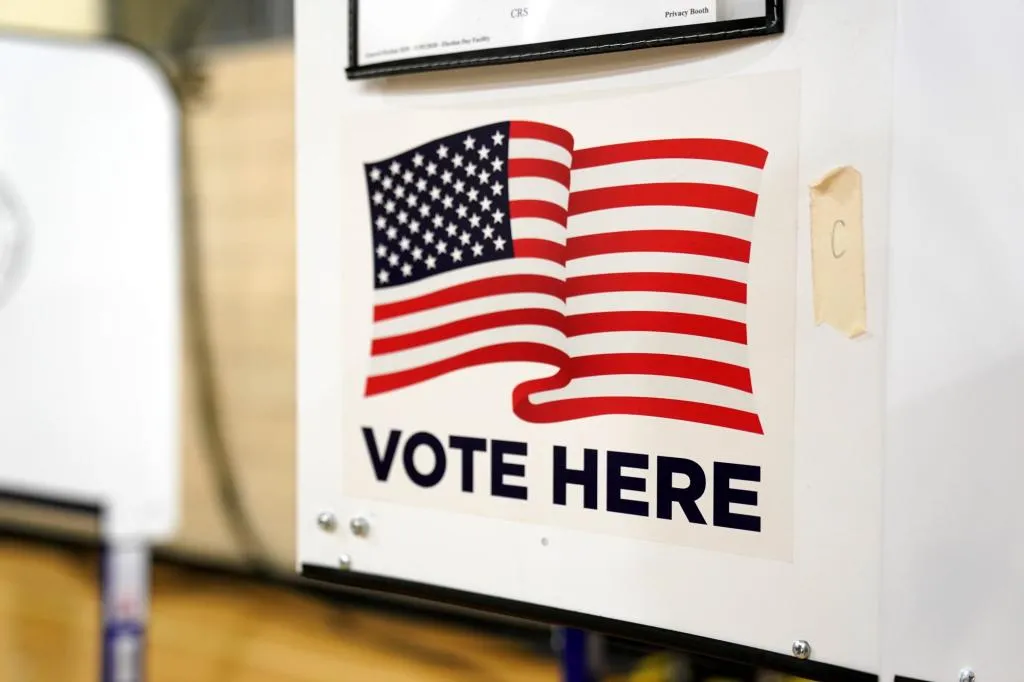This week, news reports finally surfaced what political pros have known for years: The Democratic Party has been suffering an historic decline in partisan registrations since 2021.
A full examination of the data, however, reveals warning signs for both parties.
When Joe Biden entered the White House, Democrats had a 10.6 percentage-point lead over Republicans in the 30 states that register voters by party, Louisiana political strategist John Couvillon noted on X.
Today, that lead has shrunk to only 5.6 percentage points.
Those data show a massive, historic shift away from Democrats toward Republicans.
The share of voters identifying as Democrats dropped significantly during the Biden administration, as I explained ahead of last Election Day in predicting Donald Trump's victory.
The exit polls confirmed this shift: Both the network consortium and the Fox/AP VoteCast polls showed more 2024 voters identified as Republicans than Democrats -- the first time that had happened in a presidential election since the 1930s.
That's clearly good for Republicans and bad for Democrats, but another trend is equally important: the rising share of people registered as independents.
That share rose from 30.2% in January 2021 to 32.5% in August 2025, an increase double the 1.1 percentage-point rise in GOP voter registration.
This means many people left the Democrats only to choose neither major party.
They may have voted for Republicans in November, but they remain unwilling to commit themselves to the GOP.
The trend toward independent registration seems to be accelerating this summer.
Per Decision Desk HQ's Michael Pruser, over 6,000 Nevadans registered as independents in August, while both major parties lost registrants.
Independents also out-registered Republicans in deep red states like Alaska, Iowa, Kansas and Oklahoma, and they out-registered both major parties in North Carolina, site of one of next year's most heavily contested Senate contests.
This wasn't the case as recently as last November, Pruser's data show.
The GOP out-registered independents in that month, and added nearly as many new voters as independents and Democrats combined.
The fact that's not happening anymore suggests swing voters are holding off during Trump 2.0.
They may still not like Democrats -- the data this year do not show an uptick in their registration numbers. But they are also leery of Republicans.
That's not too surprising, given Trump's job-approval numbers.
He currently has a 45.9% approval rating on the Real Clear Politics polling average -- pretty good for him historically, but in past cycles that would have been a sign that the president's party would lose the midterm elections.
This is a normal pattern. Voters in flux tend to look at a president's performance to see if they want to affiliate with his party.
The registration statistics from California during the Carter-Reagan years are instructive.
In what was then a swing state, Republicans registered more voters than Democrats between 1976 and 1980. Independents zoomed upward from 786,000 to 1.375 million.
After Ronald Reagan’s 1980 victory, the GOP’s Golden State numbers stalled in 1982 as a deep recession took hold, but rapid economic recovery reignited the GOP shift.
California Republicans out-registered Democrats by a half-million voters between 1980 and 1988, and independents barely budged, adding a tiny 170,000 as state population exploded.
Two big messages stand out from the historic and current registration trends.
First, Democrats have a big problem. From 2020 to 2024, they turned millions of people off to their party.
They can't safely ignore these data: Something must be done to reverse the trend and reconnect with Americans.
Second, Republicans haven't yet made the sale.
Yes, they're gaining in comparison to Democrats, but even more voters remain on the fence.
They will have to be convinced by results, just as Reagan's record convinced many in the 1980s.
That means it's not enough for the GOP to start to combat America's problems; its solutions must make an appreciable difference in people's lives.
The Reagan era shows that voters in flux will give a new party a few years to prove its point.
By 1984, Reagan had shown that inflation could be crushed, jobs and prosperity could return, and America could rearm and confront the Soviet Union without causing a war.
Trump's equivalent accomplishments will have to look similar: His economic policies could reduce inflation and reignite manufacturing; his foreign policy could reduce global tensions and restore American power.
Those are tall orders, and it's not yet clear he can pull them off.
But the registration data show that America is giving Trump a chance to prove he can.
If he does, the Democratic decline of the past four years will look pretty good compared to what the party will experience later this decade.
